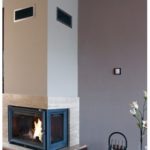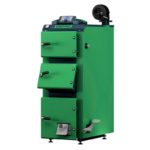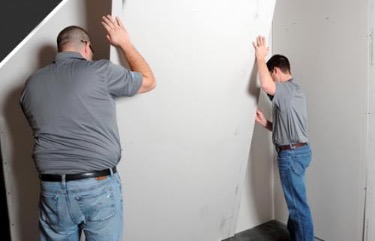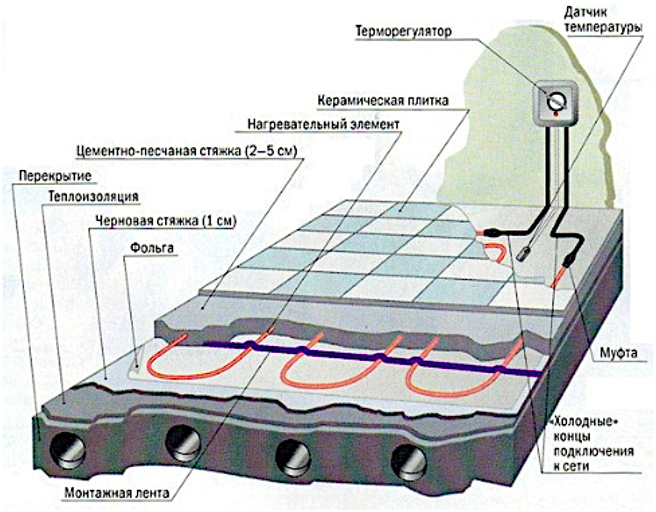Replacing the water supply in an apartment: how to do it yourself
Replacement of the water supply is carried out exclusively in agreement with the management company or HOA, if we are talking about an ordinary apartment building. The work can be done independently if you have the appropriate skills and equipment. Step-by-step instructions and recommendations for choosing materials can be found in the article below.
The content of the article
Coordination and assessment of pipeline condition
Repairing the water supply system in an apartment involves replacing pipes and connecting elements. As a rule, this is due to natural wear and tear and the desire to install new plastic pipes instead of old cast iron or galvanized steel. Replacement is planned for several reasons, the most common are:
- severely clogged pipes, clogged internal surfaces, when ordinary cleaning will no longer help;
- leaks, ruptures in connections;
- unpresentable appearance, clearly indicating heavy wear.
Repair of water supply pipes in an apartment requires mandatory approval from the management company or HOA. To do this, you need to make a written application and receive a certificate. Just in case, it is advisable to insure your apartment against leaks. It is equally important to warn neighbors about a complete shutdown of water during a certain period. It's better to do this in advance.
In order to correctly replace water pipes, you should also decide on the initial parameters:
- whether meters need to be replaced;
- which pipes to choose;
- is there a need to replace shut-off valves;
- Do I need to install filters?
- Is it necessary to replace the inlet valves (if so, you will have to shut off the entire riser).
Which pipes to choose
When planning to repair water pipes in an apartment, you need to select suitable materials in advance. Today, several types of pipes are produced, the most common are:
- Polyethylene – reliable and easy to install, repairable even in the event of an emergency. But they are not resistant to light and cannot withstand too high temperatures. As a rule, they are used only for cold water supply and in underfloor heating circuits.
- Metal – steel, with or without a galvanized layer, cast iron. Very strong and durable, but heavy in weight, installation is quite difficult. In addition, plaque and rust regularly accumulate on the internal surfaces, so regular cleaning is required.
- Installation of water supply in an apartment is most often carried out using metal-plastic pipes. They are easy to install, light in weight, and do not accumulate dirt on the surface from the inside. Unlike polyethylene, they are more resistant to high temperatures, so the scope of application is universal - they are also suitable for hot water supply.
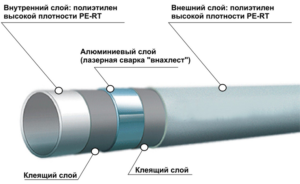
- PVC pipes have become very popular due to their high strength, affordability and lack of contamination, as well as their tendency to corrosion. But their disadvantage is similar to products made of polyethylene - they cannot withstand high temperatures, they are applicable up to +65 ° C.
- Sometimes replacing the water supply in an apartment is carried out using polybutene pipes. They appeared on the market relatively recently, but have already gained popularity due to their resistance to high temperatures, pollution and corrosion.
Step-by-step repair instructions
Replacement of water supply networks is carried out in several stages - dismantling the old system, selecting wiring and installation itself.
Dismantling works
After agreement with the management company, the old pipes are dismantled:
- Coordinate the time with the neighbors.
- The riser is blocked.
- Tighten all fittings using a wrench.
- If there are a lot of them, you can make cuts in the appropriate places with a grinder.
- First prepare a container and a thick film, which is laid on the floor after finishing work with the grinder.
- According to a pre-prepared plan, a wiring diagram for new pipes is outlined. It is transferred directly to the wall, but to do this you first need to select a wiring option.
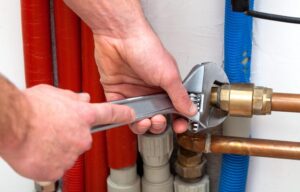
Wiring selection
The type of wiring is also chosen in advance; there are 2 main options available:
- Collector.
- Tee.
The first scheme is suitable for large apartments in which there is only one source of water supply, and the water intake points are far apart. Then each device is connected to its own separate branch, which, in turn, departs from a single collector. This is an effective scheme, but during installation you need to think about a box or other shelter, since many pipes and communications will accumulate in one place.
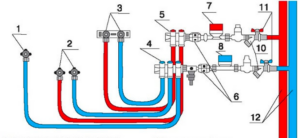
1. Washing machine water inlet 2. Sink faucet water inlet 3. Water inlet on the bathroom mixer bar 4. Cold water manifold 5. Hot water manifold 6. Check valves 7. Hot water meter 8. Cold water meter 9. Pressure reducers 10. Coarse filters 11. Shut-off valves 12. Hot and cold water risers
Replacing the water supply wiring in an apartment with a tee type is suitable for small apartments. In this case, 2 pipes are installed for hot and cold water supply. Outlet tees are cut into each. Those. the device is connected in series along the entire length of the water supply, as is customary in residential premises with a typical layout.
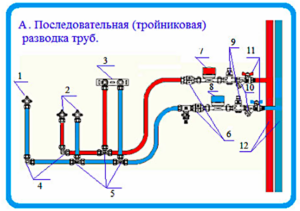
Typical diagram “A” 1. Water socket - connecting a washing machine. 2. Water outlet - connection of the sink faucet 3. Water outlets - bath mixer bar. 4. Corner. 5. Tee. 6. Check valve. 7. Hot water (DHW) water meter. 8. Cold water meter (CWM). 9. Water pressure reducer (you don’t have to use it in an apartment, but it’s a must in a private house). 10. Filter for coarse cleaning. 11. Shut-off valve. 12. Riser for hot and cold water supply.
Installation work
Next, they proceed directly to the installation of the new system - the work is carried out in several stages:
- Take measurements, mark the pipes and cut off fragments of the specified length using scissors with a ratchet (if the products are made of PVC).
- Clean the ends from dirt.
- Using a nozzle, a fitting is put on the soldering iron, and a pipe is adjusted on the other side.
- The connection is heated - the temperature and time are adjusted depending on the diameter and material of the pipe.
- Pull out the pipe with the fitting and connect it with a confident movement. The remaining elements of the system are assembled in the same way.
After all the work is completed, you need to wait a few minutes and turn on the tap to fill the entire system with water. It is necessary to carefully inspect each area, especially connections, for leaks. If necessary, make corrections and change fittings.

